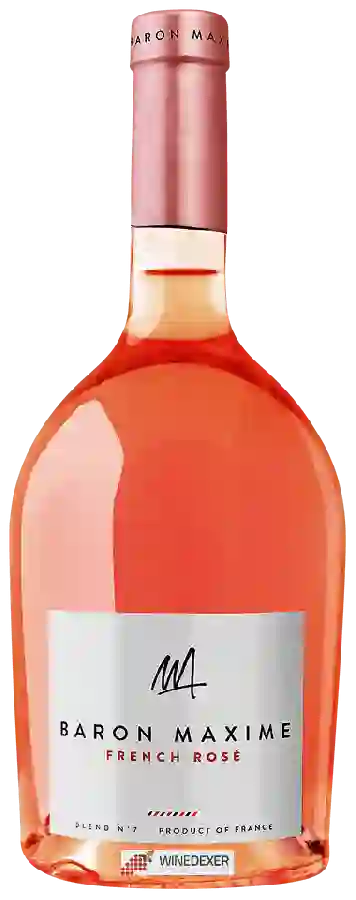
Winery Baron MaximeFrench Rosé
This wine generally goes well with beef, game (deer, venison) or lamb.
Wine flavors and olphactive analysis
On the nose the French Rosé of Winery Baron Maxime in the region of Vin de France often reveals types of flavors of red fruit, strawberries or red fruit.
Food and wine pairings with French Rosé
Pairings that work perfectly with French Rosé
Original food and wine pairings with French Rosé
The French Rosé of Winery Baron Maxime matches generally quite well with dishes of beef, lamb or game (deer, venison) such as recipes of quick beef bourguignon, lamb mouse confit in wine or rabbit provencale (mario style).
Details and technical informations about Winery Baron Maxime's French Rosé.
Discover the grape variety: Merlot
Merlot noir is a grape variety that originated in France (Bordeaux). It produces a variety of grape specially used for wine making. It is rare to find this grape to eat on our tables. This variety of grape is characterized by small to medium sized bunches, and medium sized grapes. Merlot noir can be found in many vineyards: South West, Languedoc & Roussillon, Cognac, Bordeaux, Loire Valley, Armagnac, Burgundy, Jura, Champagne, Rhone Valley, Beaujolais, Provence & Corsica, Savoie & Bugey.
Last vintages of this wine
The best vintages of French Rosé from Winery Baron Maxime are 2019, 2018, 2017
Informations about the Winery Baron Maxime
The Winery Baron Maxime is one of of the world's greatest estates. It offers 15 wines for sale in the of Vin de France to come and discover on site or to buy online.
The wine region of Vin de France
Vin de France is the most basic level of quality for wines from France. These are generally uncomplicated everyday drinks - most often blends, but perhaps also Varietal wines based on a well-known Grape variety such as Cabernet Sauvignon, Merlot, Chardonnay or Sauvignon Blanc. Wines from France are those that do not meet the criteria stipulated by the Protected Designation of Origin (PDO) or Protected Geographical Indication (PGI) laws (see information on French wine labels). This may be because the vineyards are outside the delimited production areas or because the grape varieties or winemaking techniques used do not conform to the rules of the local appellations.
The word of the wine: Rancio
Odour and taste characteristic of certain wines that have undergone oxidative maturation, i.e. in contact with oxygen (vin jaune du Jura, dry rancio du Roussillon, maury, banyuls, rivesaltes, etc.).














